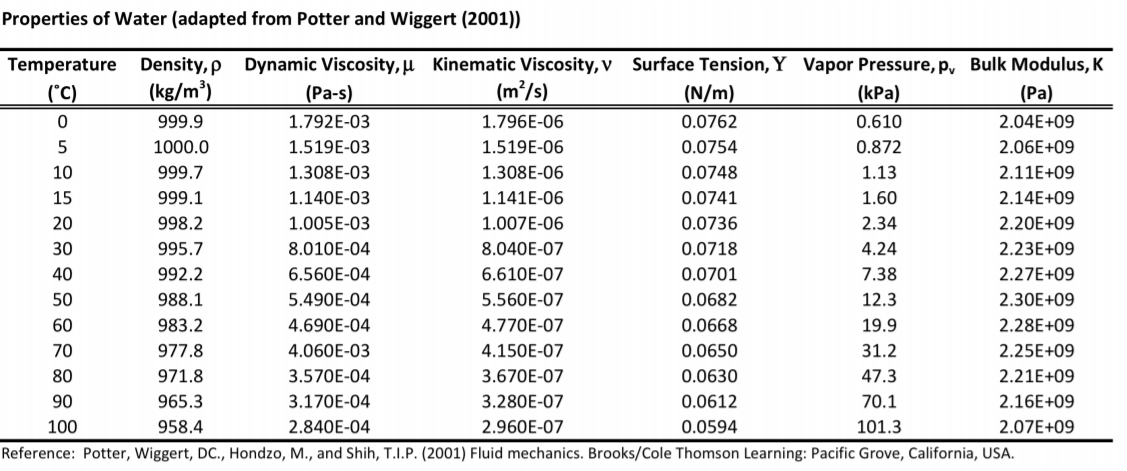
thicken CO 2) as much as C 8F 17-based PFA in the 25–125 oC range. Further, both C 6F 13-based and C 4F 9-based PFA can increase the viscosity of single-phase CO 2-PFA solutions (i.e. Based on cloud point loci in the 1–4 wt% PFA in CO 2 concentration range at temperatures of 25, 50, 75, 100 and 125 oC, it is shown that C 6F 13-based and C 4F 9-based PFA, with relatively benign degradation products perfluorohexanoic acid (PFHxA) and perfluorobutanoic acid (PFBA), respectively, retain the same level of CO 2-solubility as that of C 8F 17-based PFA.

Absolute or dynamic viscosity is used to calculate Reynolds Number to determine if a fluid flow is laminar, transient or turbulent.Homopolymerization of fluoroacrylate monomers containing a segment with eight fluorinated carbons, (CH 2CHCOO(CH 2) 2(CF 2) 7CF 3), yield poly(fluoroacrylate) (PFA) with remarkably high solubility in CO 2, but the corresponding ultimate PFA degradation product perfluorooctanoic acid (PFOA) is bio-accumulative. Absolute or dynamic viscosity of water in centipoises for temperatures between 32 – 200 oF. What is the viscosity of water in centipoises? This value is the viscosity of water at 20☌. The dynamic viscosity of water at room temperature has a value of around 1.0 mPa⋅s, and it decreases as temperature increases. Water, being the most studied liquid, is the best fluid to start with when learning about viscosity. Which is the best fluid to study viscosity? Such liquids can be used for flow temperatures down to -25☌, depending on the application the thermostat is used for. Mixtures with lower antifreeze content have also lower viscosity, which leads to less flow resistance and less load of the thermostat’s pump. Other mixtures are 30:70 or 20:80 of antifreeze : water (% by volume). What is the viscosity of water and antifreeze? For example, the kinematic viscosity and density of water at 78 ☌ is around 0.37344 mm 2 per second and 0.973 grams per cm 3, respectively. Simply multiply the kinematic viscosity of the liquid at a particular temperature by its density at that same temperature. The unit of viscosity is newton-second per square metre, which is usually expressed as pascal-second in SI units. Thus, upon heating, liquids flow more easily, whereas gases flow more sluggishly. The viscosity of liquids decreases rapidly with an increase in temperature, and the viscosity of gases increases with an increase in temperature. What is the relationship between viscosity and temperature? In liquids it usually decreases with increasing temperature, whereas, in most gases, viscosity increases with increasing temperature. Viscosity depends strongly on temperature. Honey would move slower than water, so honey would have a greater viscosity. To think of viscosity in everyday terms, the easier a fluid moves, the lower the viscosity. What happens when viscosity is high?Ī fluid that is highly viscous has a high resistance (like having more friction) and flows slower than a low-viscosity fluid. But oil is more viscous than water and thus when when we put a drop of water and oil on a slant surface, water will move downwards more quickly than the oil drop. There is no relationship between viscosity and density of a fluid. More thick a liquid is, more slowly it will flow’. Honey, syrup, motor oil, and other liquids that do not flow freely, like those shown in Figure 1, have higher viscosities. Water, gasoline, and other liquids that flow freely have a low viscosity. The viscosity of a liquid is a measure of its resistance to flow. Below the freezing point, the viscosity is harder to define (although large masses of ice do flow), but the curve is discontinuous and it “jumps up” to some higher value. As you can see, it decreases smoothly as temperature increases. What is viscosity of water in centipoise?ĭoes water viscosity change with temperature?

Viscosity is a measure of the resistance of a fluid to deformation at a given rate. The viscosity of water at a temperature of 20 degrees Celsius is approximately 0.01 poise or 10-3 Pa. What is viscosity of water at room temperature? At 10 ☌, water’s kinematic viscosity is around 1.3 mm2 per second while at 30 ☌, it goes to around 0.8 mm2 per second. Temperature Īt 20 ☌, water’s kinematic viscosity is around 1 mm2 per second and goes higher at lower temperatures. Water has a viscosity of 0.0091 poise at 25 ☌, or 1 centipoise at 20 ☌….Water – Density Viscosity Specific Weight. What is the viscosity of water at 50 degrees Celsius?


 0 kommentar(er)
0 kommentar(er)
